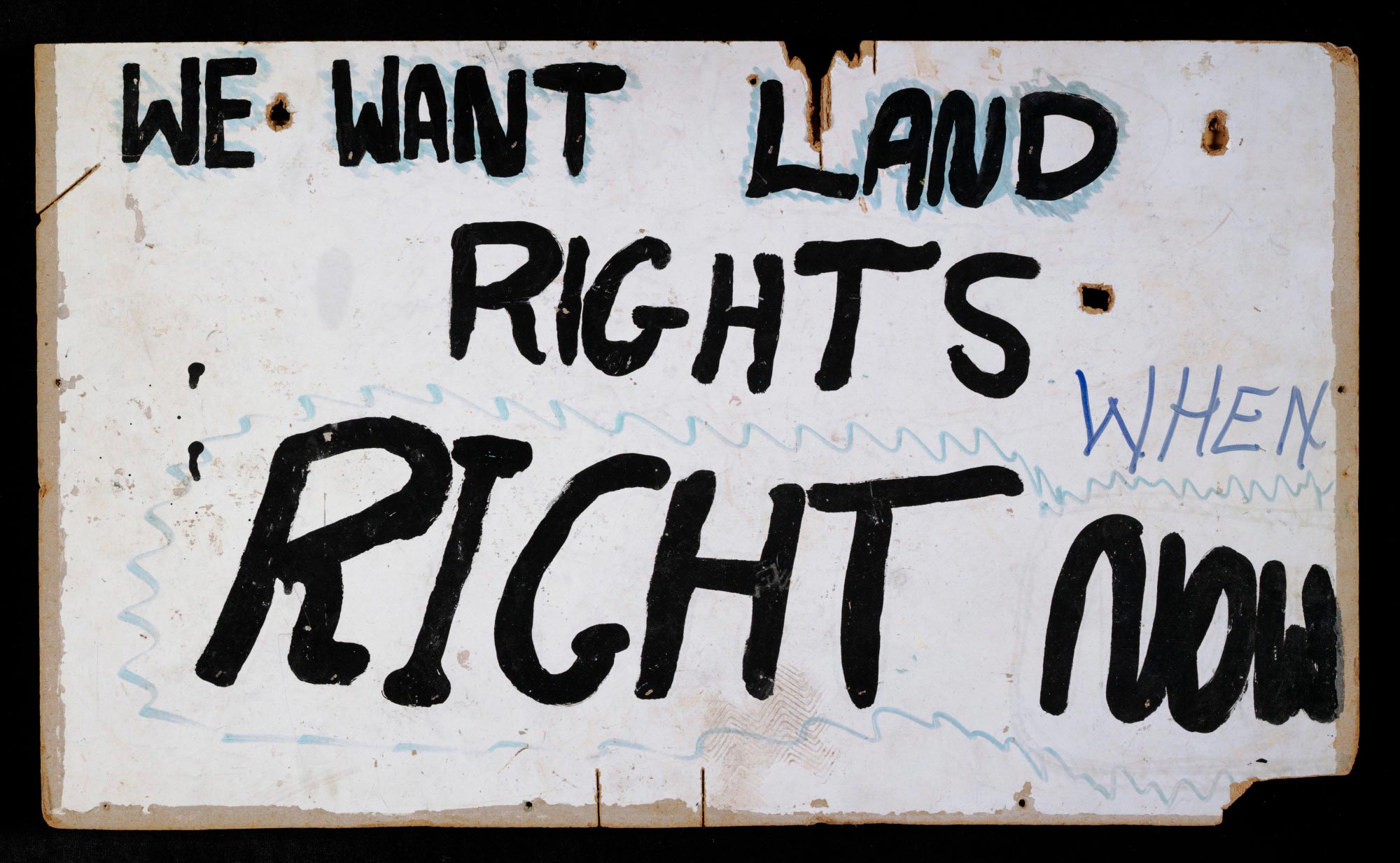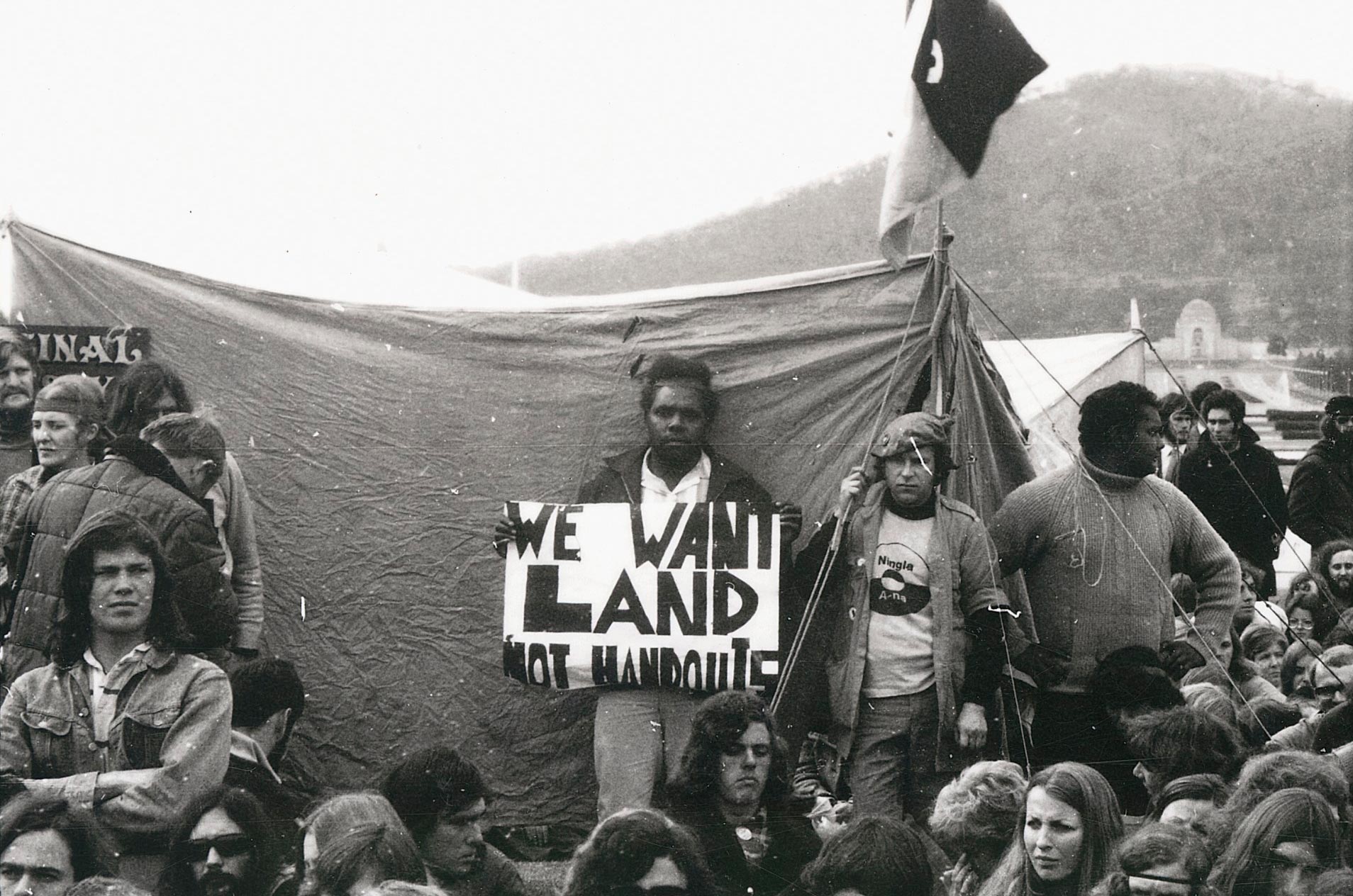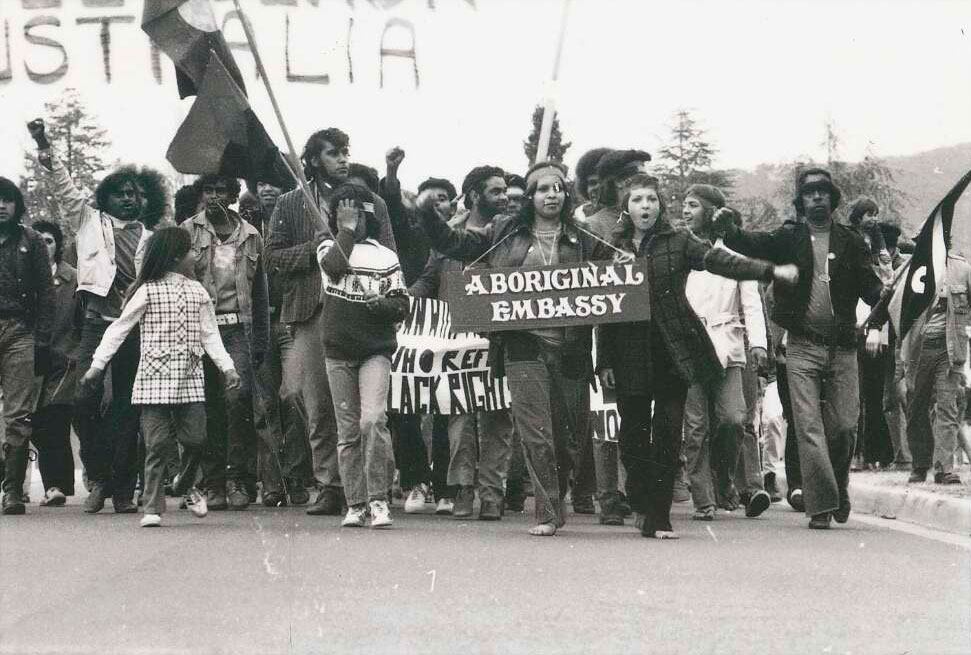‘Land rights now’
1976: Australian Government passes the Aboriginal Land Rights (Northern Territory) Act
‘Land rights now’
1976: Australian Government passes the Aboriginal Land Rights (Northern Territory) Act
In a snapshot
In December 1976 the Australian Parliament passed the Aboriginal Land Rights (Northern Territory) Act. It was the first legislation in Australia that enabled First Nations peoples to claim land title (ownership), if they could prove their traditional connection to the land.

 Can you find out?
Can you find out?
1. What did First Nations peoples begin to do more often from the 1960s to draw attention to land rights?
2. Give one example of a major land rights protest before 1972. Why was the example you chose important in the growth of the land rights movement?
3. Which government began drawing up the first land rights legislation, and which government actually passed it?
What were the consequences of colonisation?
In 1788 British settlers and convicts began to colonise Australia. First Nations peoples resisted colonisation, but many communities were no longer able to live on their own Country.
In the Northern Territory, the colonisers set up large pastoral stations. Many First Nations communities in the Northern Territory were able to retain a connection to their land by working on these pastoral stations. But First Nations workers were usually treated badly and very often not paid for their work.
‘Every part of Australia — had a name and use and belonged to someone.’
How did land rights protests begin?
From the 1960s First Nations peoples and their supporters began to organise protests, strikes and petitions. They argued that First Nations peoples should have more control over their traditional lands. For example in 1963 the Australian Government announced that a new mine would be built in north-east Arnhem Land. They did not ask the Yolngu people who lived on the land. The Yolngu sent a bark petition to parliament asking that they have a say in whether the mine was built. Although the government denied the Yolngu’s request, this was an important moment in the struggle for First Nations land rights.
In 1966 the Gurindji people at Wave Hill cattle station in the Northern Territory went on strike. They demanded higher wages as well as the return of some of their traditional lands. This dispute lasted for nine years and helped to make the Australian public aware of the issue of land rights. By the early 1970s the First Nations rights protests had grown. In 1972 the Aboriginal Tent Embassy was set up on the lawns opposite Parliament House to put pressure on the government to give First Nations peoples control of their land.
Research task
Why did the Australian Government make a law about land rights only for the Northern Territory in 1975? Has this situation changed? Hint: Follow this link to another defining moment to find out:
How was the Land Rights Act passed?
In 1972 the Labor Party led by Gough Whitlam came to power. The Whitlam government set up the Aboriginal Land Rights Commission to look into how land rights could be recognised in the Northern Territory. In 1974 the Commission recommended that First Nations peoples in the Northern Territory should be able to claim land title if they could prove they were the traditional owners of the land. Before the Whitlam government could create the new land rights laws, a new conservative Australian Government came to power. But this Coalition government, led by Malcolm Fraser, also supported First Nations land rights.
In December 1976 the Australian Parliament passed the Aboriginal Land Rights (Northern Territory) Act. It was the first legislation that allowed First Nations peoples to claim land title. Today, about 50 per cent of the Northern Territory is owned by First Nations communities.
Read a longer version of this Defining Moment on the National Museum of Australia’s website.
Research task
Find out when other Australian states and territories passed similar land rights legislation.
Research task
Are there any native title claims in your region? You can use the National Native Title Tribunal website to find out:
 What did you learn?
What did you learn?
1. What did First Nations peoples begin to do more often from the 1960s to draw attention to land rights?
2. Give one example of a major land rights protest before 1972. Why was the example you chose important in the growth of the land rights movement?
3. Which government began drawing up the first land rights legislation, and which government actually passed it?





















